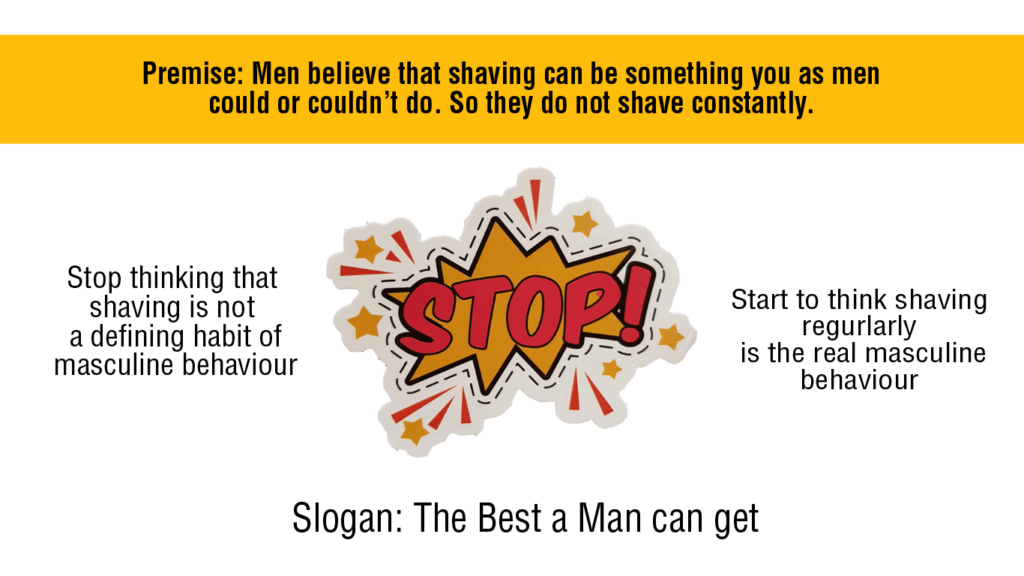If you haven’t seen the last Gillette’s 2019 campaign (launched in January 2019), you have been living under a rock. There is a ton of hidden information about values and market share that the brand wants to change? Here it is:
Many ask themselves why Gillette will pull out a commercial of this kind. They are not selling razors, nor they are talking about Gillette’s history over the years, as an institutional video that highlights P&G power and reach. So, why are they doing this?
What we can say about the Gillette ad is that it was made to create discussion, but why? Clearly, it wants to generate talk, but it is impossible not to consider that the message could have had a better structure and insights without implying political references and ideologies, which in advertising results counter-productive.
Divide and Conquer?
Regardless of the Procter & Gamble PR campaign to clarify the sense and purpose of the ad, there are signs of conflictive messaging in the commercial. Here, we will unravel the ad and see which are the nuances that make Gillette ‘Be all the man you can be’ ad so polemic and polarizing.
First, we need to consider that every message paid and promoted by a business, in this case, a multinational, it is determined by specific objectives (branding, selling, commercial purposes, among others) aimed to benefit the business.
This also let us know that for no reason Gillette would like to lose a percentage of its market share; mainly, because as a big company they maximize profit, as much as the product/service allows them to do (without losing consumers in the way), while lowering any potential costs (Even during low season sale with actions such as promotions, cross-selling, up-selling, among others).
So, why would Gillette create a message that completely changes the branding image they have been promoting for so long? Here we have a glimpse of Gillette commercials in the past 50 years:
Gillette commercial in the ’60s.
Gillette commercial during the ’80s
An experienced brand
We can notice that during the ’80s Gillette begin to appeal to the father figure. As a worker, a husband, a sports person, a businessman. They pitch a sense of masculinity and camaraderie, and the heavy slow-motion camera takes are inserted to reinforce ‘the moments’ the brand wants to highlight as ‘Insights.’
Gillette wanted to create a relationship between traditional masculine attitude and felling with its product: a razor blade. So, as a consequence, they want to encourage this union making the consumers believe there is a code of conduct involved with the brand. Take notice of this word: behavior.
Values and Marketshare
Now, this is an essential step in social behavior analysis because for decades, even centuries, the beard has been the quintessential expression of male identity. This view is still seen in many cultures (inside and outside the US).
Also, we need to have in mind the purpose of a brand is making more money, whatever the means necessary (legal means).
So, back in the first decade of the twentieth century, what could you do to make more men shave more often? You know the general audience does not consider shaving as a necessary nor obligatory male behavior but something that any men can choose to do. Well, it is simple: let them think that a shaved man is a masculine man.
So, under that prerogative, Gillette created this marketing idea of ‘Shave = Behave like a man.’ All to sell more razor blades to the male audience. Moreover, since day one, all their efforts were put together to join traditional male behavior to its product.
As a consequence, the marketing challenge Gillette used more than 50 years ago was something like this:

So, they have always used the traditional masculine behavior in their ads and reinforced the idea of shaving as something very masculine and necessary to do (to sell more razor-blades).
Modern days, Modern Behavior… Yet?
Over time, all behavior changes. Nowadays, new ideologies of what a man means to be are providing new angles of what male action in western society should be. Regardless of these beliefs, a product must follow the rules of the market: supply and demand.
As a consequence, it requires updating the message, so they do not lose their decades-earn market share. However, the add that Gillette launched in January is no longer using traditional male values as a campaign goal.
In other words, it’s not considering the target’s strategic values and believes, instead it’s trying to change a set of values the brand find ideal.
This decision is surprising in the sense that no advertising company will seriously recommend a business to change their target values (which are currently being debated in the western world) for their own set of values (or the values the company believes the target will have to consider as worth pursuing).
Getting real
This strategy is, at most, confusing because a company cannot change values. Business uses the beliefs already in motion, inside the social groups they are aiming, to sell products.
In this case, Gillette should have chosen to launch a campaign, including positive ‘male behavior’ that both parties (traditional and non-traditional) agree.
Some of these behaviors are father-to-son relationships such as support and camaraderie between friends, resilience during hard times, compromise and valor, the long hours a man must work to provide to his loved ones, etc.
Why? Because the company is selling a product for millions of men who do these actions regularly (Insights), not a group within men who believes in non-traditional values. In the end, these millions of men are the ones who are going to choose to buy the razor blade that identifies with them in the best way possible.
Finally, if there is going to be a backlash, it is better to receive a lousy critique from the ones who do not buy your products than from the audience who does it.
This case study is a lesson to learn for Gillette and a sign that 2019 is going to be an exciting year for advertising.
Here some articles that provide contrasting views about the Gillette’s last advertising campaign:
Why Gillette’s new ad campaign is toxic.
Scientists agree with the message of Gillette’s toxic masculinity ad.

